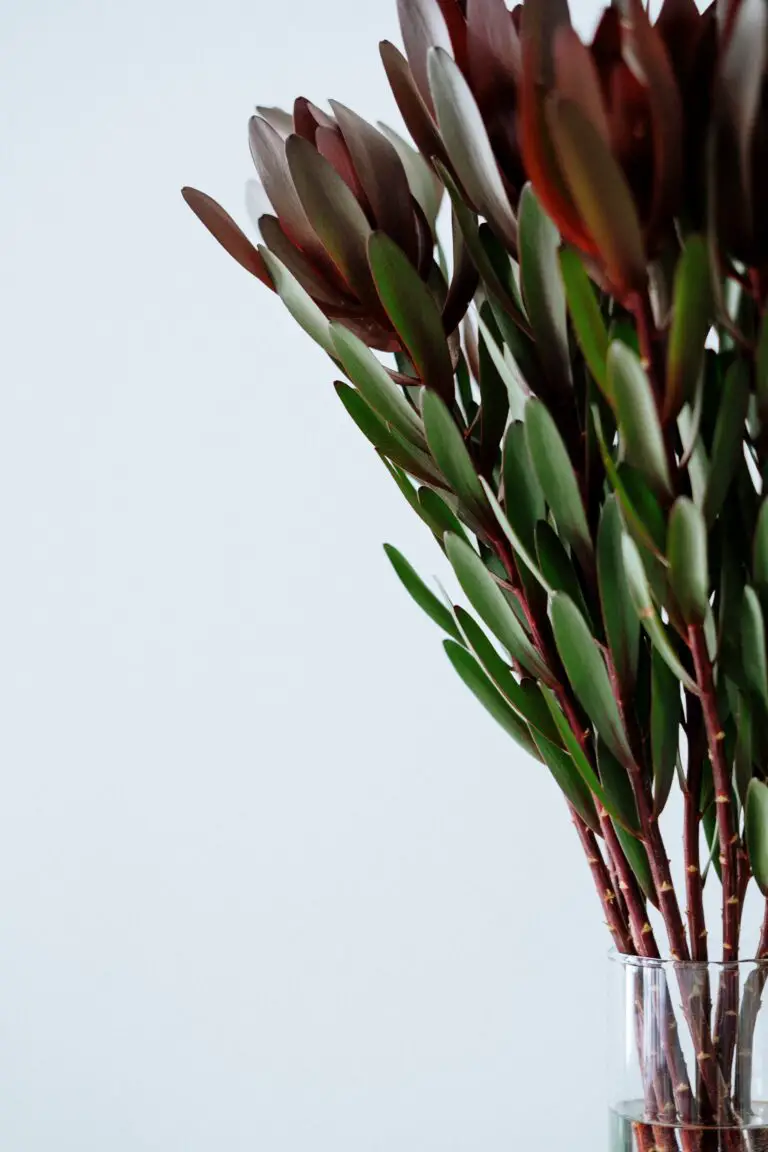Introduction to Crassula Propagation
Unlocking the secrets of nature can be as simple as observing the resilient Crassula plant as it multiplies from mere leaves. Embarking on a horticultural adventure with these ideal beginner-friendly plants, we are introduced to an understanding that verges on the magical. Crassula leaf propagation isn’t just a testament to the wonder of plant growth; it’s an invitation to witness the strength and adaptability of these succulent varieties.

Imagine a single leaf, fallen, finding solace on a bed of soil. In time, with care and patience, it gives rise to a new succulent. This is not just growth; it’s regeneration, it’s hope taking root. For those eager to learn, a visit to our comprehensive guide on succulent soil is an excellent starting point. Here, you’ll discover more than just dirt compositions; it’s about nurturing the very foundation of your Crassula’s new life.
Whether you’re a green-thumbed guru or testing the waters of your gardening expertise, Crassula plants offer a forgiving and rewarding journey into propagation. Each leaf has the potential to unfold into a robust plant, complete with jade-like leaves and a sturdiness to thrive in various environments. Consider this our opening chapter, where beginners are welcomed, and the curious are nurtured, into the verdant world of Crassula propagation.
Choosing Healthy Leaves for Propagation
Imagine this: a verdant bush of Crassula, often known as the ‘Jade Plant,’ growing robustly in your favorite sunny nook. Now, picture cultivating your personal collection from just a single leaf. Set the stage for success by handpicking the healthiest leaves—your living ‘starter kit’ for a whole new plant. Join me, and let’s unpack the essentials of picking prime leaves that promise a prosperous propagation.
First off, eye for vibrancy—a leaf that’s bright green, plump, and full of life. It’s the hallmark of a-crassula-leaf-with-potential. Firm to the touch, these leaves have a resilience in their hold, gently springing back when given a soft squeeze. These traits scream ‘excellent choice’ for embarking on your propagation voyage. Take a cue from the connoisseurs of Crassula care, who agree that a leaf’s vigor is a telltale sign of its readiness to root and flourish.
But it’s not only about the aesthetics; it’s about the leaf’s innate capability to regenerate. We want a leaf that says, “I’m ready to root!” Avoid leaves with spots, damage, or discolored areas. Imagine them as contenders in a leafy marathon, the aim being to develop roots and shoots. Those that start strong, without injury or ailment, are the ones that cross the finish line—that is, grow into vibrant new plants.
Now remember, even prime leaves need prime conditions. You wouldn’t send an athlete into a game without the right gear, would you? So, ensure your Crassula leaf gets the perfect match of mothering soil—an airy, well-draining mix that’s the ‘athletic wear’ of the plant world. The effectiveness of this synergy is exemplified in exploring the nuanced tips for Crassula maintenance.
It’s remarkable how, in the grand theater of nature, a single leaf can unleash the totality of a jade-like jewel. By choosing with care, you’re plotting the trajectory of a Crassula’s destiny. To embrace the full circle of leaf propagation, here’s a practical visual guide to bring this narrative to life:
Every leaf is a legacy, waiting to unfurl its future form. By selecting well, you turn a singular leaf into a symbol of budding growth and enduring greenery. Here’s to your green thumb and the remarkable regeneration journey of the Crassula plant!
Step-by-Step Guide to Propagating Crassula Leaves
Ever wondered if you could simply pluck a leaf from your cherished Crassula and make it grow into a brand new plant? Absolutely, and it’s not sorcery—it’s leaf propagation. Let me walk you through, well, pretty much the easiest plant magic trick you can do at home to multiply your Crassula collection.
Preparing the Leaf for Propagation
Start with selecting a healthy leaf from your Crassula. You want one that’s robust, plump, and green with no signs of yellowing or damage. Gently wiggle the leaf from the stem—it should snap off cleanly. A clean break is key; any part left on the stem might hinder your chances of success.
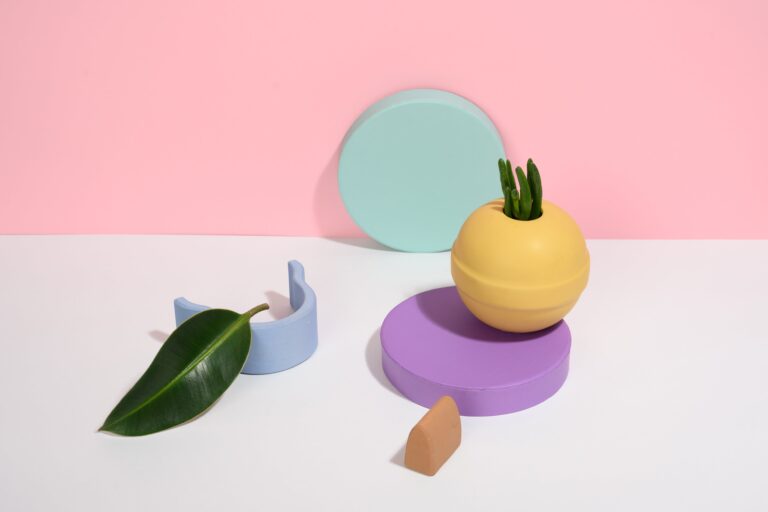
Creating the Right Environment
Now, patience is paramount. You’ll need to allow the end of the leaf where it broke off to callous over; this takes a few days. During this time, ensure you’ve prepared a welcoming bed of well-draining soil in a small pot. Position it somewhere bright but out of direct sunlight, which could be harsh on your tender leaf.
The Step-by-Step Procedure from Plucking to Planting
Once the leaf has calloused, it’s time to lay it atop the soil. That’s right, no burying required. Just a gentle placing on the surface will do. Now, this is where the magic starts to happen. With the right care, tiny roots will begin to search for soil, and before you know it, a miniature Crassula will begin to emerge. Spritz the soil with water when it feels dry to the touch, but beware of overwatering as it can spell doom for your little leaf.
Real-life examples? I’ve got plenty. Take my friend’s Crassula, for instance, which sprouted a whole new plant from a single fallen leaf ignored on a windowsill. Or the leaf that traveled in a book as a bookmark and started to grow when accidentally left on damp soil. These little guys are resilient!
To venture even deeper into the nuances of Crassula propagation, check out this resource that dives into the subtleties of caring and multiplying these succulents. And if you’re a novice wishing to broaden your knowledge on nurturing these plump-leafed buddies, our guide on succulent care is a treasure trove of tips and tricks.
Remember, propagating Crassula is a game of patience and attention to detail. It’s not just about successfully rooting that leaf; it’s about the journey of watching it transform into a thriving plant. So, is it time to turn over a new leaf? Quite literally, yes!
Caring for Your Propagated Leaves
So, you’ve mastered the art of leaf propagation with your Crassula plant, and tiny roots are beginning to peek through – how exciting! But hold on; it’s not just about watching them grow. There’s a whole art to ensuring these little green champs thrive. Let’s dive into the world of post-propagation care with a few actionable tips.
First things first, water is like a double-edged sword. You want to give your leaf-cuttings a drink, but not a bath. The trick is to keep the soil slightly moist. Think of it as a sponge that’s damp but not dripping. This provides enough hydration for the leaves without causing root rot or fungal diseases.
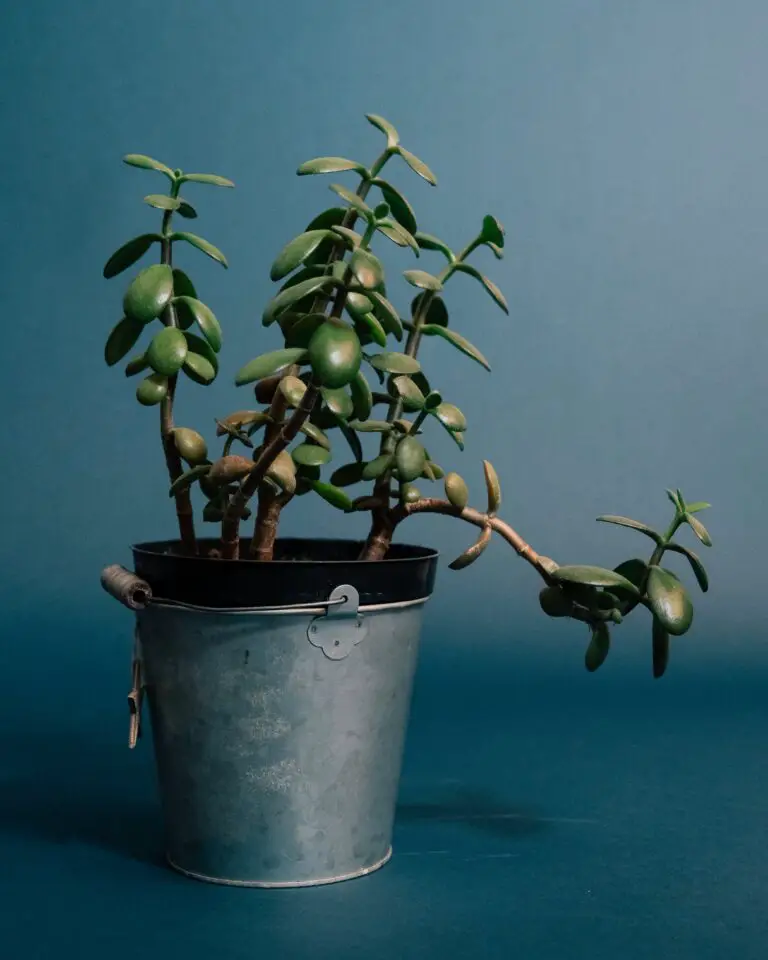
When it comes to sunlight, these propagated leaves are kinda like newborns; they need a gentle touch. A spot that offers bright, indirect light will make them happy. Direct sunlight? Now, that’s a no-go. It can scorch their delicate new roots faster than you can say ‘photosynthesis.’
And here’s a little do’s and don’ts roundup: Do be patient, because good things (and roots) take time. Don’t fuss over them; helicopter parenting does not apply here. If the leaf starts looking like it’s throwing a tantrum (aka shriveling or turning yellow), it’s whispering for help—time to reassess the water and light situation.
Remember, friends, every Crassula leaf is on its own journey. Some may sprint to the finish line, while others take the scenic route in developing roots. Just like us, they need the right balance of care, space, and love to unfold into the green beauties they’re meant to be. Keep these tips in your plant-parenting toolkit, and you’ll raise a lush, green army of Crassula offspring in no time.
Troubleshooting Common Propagation Issues
So, your green fingers are twitching to grow a Crassula from scratch using leaves, but you’ve hit some snags along the way. Fear not, plant whisperer! Let’s decipher these cryptic messages your succulent leaves are sending when they don’t behave as expected.
Ward Off the Rot!
Rotting is the supervillain of plant propagation, often sneaking in when the air is too moist or the soil is waterlogged. Imagine this: your hopeful leaf cuttings looking less like future plants and more like soggy, decomposing mini-rafts. To combat this, provide your cuttings with well-draining soil and avoid the urge to over-water. A touch of cinnamon – nature’s antifungal – on the cut end can also work wonders against rot.
Drying Out: When Thirst Goes Unquenched
You might find your Crassula leaves shriveling up like tiny green raisins, a clear SOS for hydration. The twist? They need the right kind of drink. Keep the soil slightly moist but not drenched. Use a spray bottle to mist the soil gently rather than dousing it, ensuring a sip, not a swim, for your delicate leaf.
The Root of the Problem
Patience is key when you’re on root watch. If you’ve been staring at your leaf cutting for what seems like an eternity and it’s as barren as a desert, it’s time to troubleshoot. First, consider if the light is right. Crassula cuttings thrive in bright, indirect sunlight – too much shade and they’re snoozing; too much harsh light and they’re sunburnt. Secondly, inspect the end that’s meant to sprout roots. If it’s damaged or scarred, it might be time to start over with a fresh cut.
Take a leaf out of the book of successful Crassula cultivators by committing these tips to memory. And remember, even the most seasoned gardeners face these trials. But with a bit of know-how and a lot of love, those little leaves can indeed become lush, full-grown succulents. Now, let’s visualize victory with an image of Crassula that’s a propagation pro:
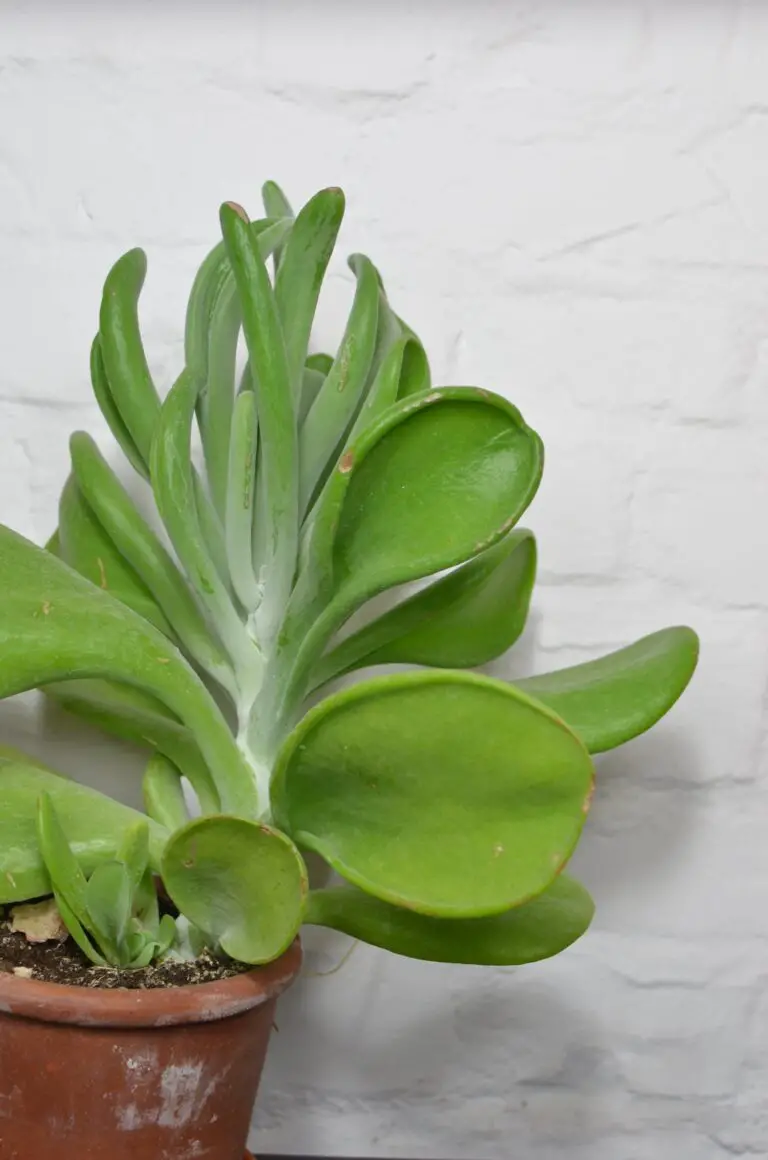
As you march forward in your Crassula conquest, keep these tips as your trusty sidekicks, and you’ll be on the path to propagation triumph!
Transplanting Your Grown Crassula Plants
Imagine you’ve successfully coaxed a tiny leaf into a thriving, lush Crassula plant. The next exciting phase in your green thumb adventure begins – transplanting your grown Crassulas into their forever homes. The transition from propagation tray to permanent pot is like graduation day for your plants, and I’m here to give you the rundown on how to make this a seamless ceremony.
When it comes to soil selection, think of it as tailoring the perfect suit; you want something that fits just right. Crassulas love a well-draining mix that won’t hold on to moisture for too long – think a combo of potting soil, coarse sand, and perlite. This ensures your plant’s roots won’t be basking in water, preventing root rot and other soggy situations.
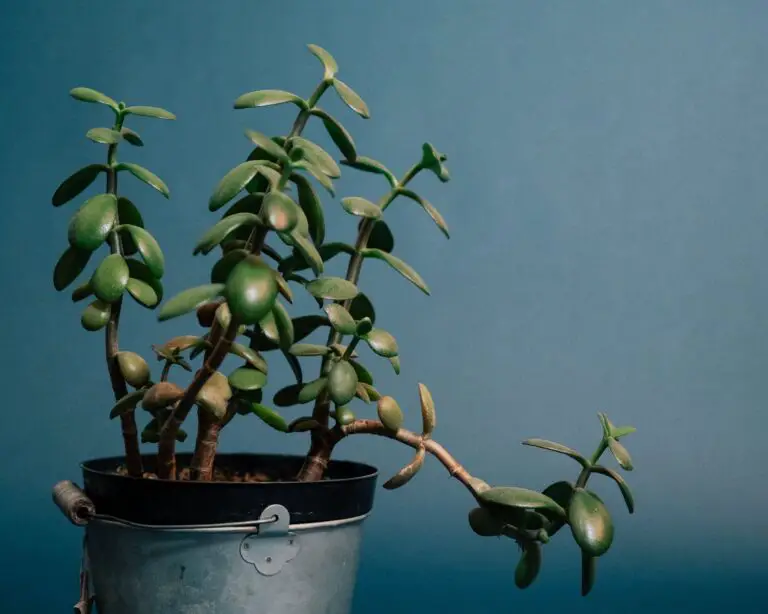
Now, let’s talk potting. Size matters here; a container that’s too big can drown your plant’s roots with excess soil moisture. Start with a pot that gives your Crassula just enough room to grow. Plus, ensure your pot has drainage holes. This is non-negotiable! It’s like having an emergency exit for excess water – an absolute must for plant health.
Acclimatization is another key step in transplanting your Crassula. Just like you wouldn’t run a marathon without training, your Crassula needs to adapt to its new environment slowly. Gradually introduce your plant to the new pot by giving it time to get accustomed to the new soil and surroundings. This reduces transplant shock, ensuring your Crassula thrives from day one in its new home.
Think of transplanting as helping a friend move to a new city. You’d want them to feel comfortable and set up for success, right? Same goes for your Crassula. With the right soil, the perfect pot, and a gentle transition, your leafy friend will prosper in its new pot, just like a well-adjusted newcomer to the neighborhood.
Benefits of Propagating Crassula from Leaves
Gearing up to grow your green family with a stylish Crassula? Let’s uncork the benefits of starting your succulent escapade through leaf propagation. It’s the budget-friendly botanical ballet, where each leaf twirls into a new plant. But it isn’t just about being kind to your wallet; it’s a front-row seat to nature’s show!
Picture this: You’re admiring your Crassula, your eyes gliding over its jade-like leaves when suddenly, you spot a leaf that has fallen. Instead of seeing a fallen warrior, view this as an opportunity. Placing this tiny leaf on some soil is the first act of a thrilling play—the birth of a baby Crassula! It’s almost magical, watching a single leaf unfurl into a robust, miniature version of its parent.
Now, dive into the nitty-gritty of why people are over the moon about leaf propagation for Crassula plants. First off, it’s a game of numbers—success rates are staggering. While not every leaf will grow into a plant, the odds are in your favor with Crassula. Compared to other propagation methods, where you might break the bank and your heart, leaf propagation is a gentle, hopeful approach.
Beyond the numbers, there’s the sheer joy of observation. Caring for a plant is nurturing life, and when that life springs from a leaf you’ve planted, it’s like watching your botanical brainchild grow. Each day brings a change; a tiny root here, a miniscule sprout there, and before you know it, you’re a proud plant parent to an assortment of succulent offspring!

Leaf propagation isn’t rocket science; it’s actually pretty chill. Take a leaf (a healthy one, mind you), lay it on some soil, and just like that, you’ve taken the first step toward creating a verdant oasis. You become a life-giver, an alchemist of the plant world, and it starts with a bit of patience and a single leaf of the hardy Crassula.
What we’re talking about here isn’t just practical, it’s poetic. There’s a rhythm to leaf propagation that’s soothing to the soul. The Crassula leaf, though seemingly insignificant, harbors a world of potential; when given a chance, it unfurls that wonder right before your eyes. That’s the beauty of starting with leaves—each one is a promise of a future flush with green beauty.
Leaf Propagation: A Journey for Green Thumbs and Hearts Alike
Whether you’re a seasoned gardener or a curious newcomer, propagating Crassula from leaves is an immersive journey through the miracles of nature. It isn’t just about cultivating plants; it’s about cultivating patience, nurturing hope, and, ultimately, reaping the rewards of a tenderly crafted plant patch. So, why not grab a leaf and embark on this verdant voyage? Your Crassula clan awaits!
Frequently Asked Questions
Ever glanced at a robust Crassula and wondered how a single leaf could grow into such a splendor? You’re not alone! Many budding gardeners have queries about leaf propagation in Crassulas, and we’ve compiled the answers to ensure your gardening journey is as smooth as the leaves of this resilient succulent!
Can any leaf be used for Crassula propagation?
Think of a leaf like a seed, but not all seeds are created equal. For the highest success rate, choose healthy, plump leaves from an established Crassula. These are the ones that whisper, “I’m ready for this new adventure!” Avoid leaves that are too thin or damaged, as they might not have the stamina for the development ahead.
How long does it take for a Crassula leaf to sprout roots?
The Crassula plant is not one to rush things—the art of serenity, remember? Sprouting roots can take anywhere from 2 to 6 weeks. It’s like watching paint dry, but oh, so much more rewarding! Provide your leaf with a gentle environment, and soon you’ll observe tiny roots reaching out, eager to embrace life.
What’s the deal with watering during leaf propagation?
Watering is akin to a balancing act; too much, and your leaf could succumb to rot, too little, and it may dry out. Aim for the ‘Goldilocks zone’ of moisture. Typically, a light misting every few days will suffice to coax roots from their leafy cradle without overwhelming them. Remember, it’s about giving the leaf a refreshing sip, not a bath!
Why isn’t my leaf showing any new growth?
Sometimes, despite our best efforts, the universe just says no. But fear not. If your Crassula leaf isn’t performing, consider factors like the leaf’s health at the start, the quality of soil used, and the consistency of lighting conditions. Even then, some leaves might just take their sweet time, so patience is key!
From the individual experience of a gardener who treated each leaf with the reverence of a rare coin to the community forums where stories of propagation triumphs and trials are shared – every Crassula cultivator has a story. And with these answers snug in your arsenal, you’re now ready to write your own Crassula propagation narrative!
